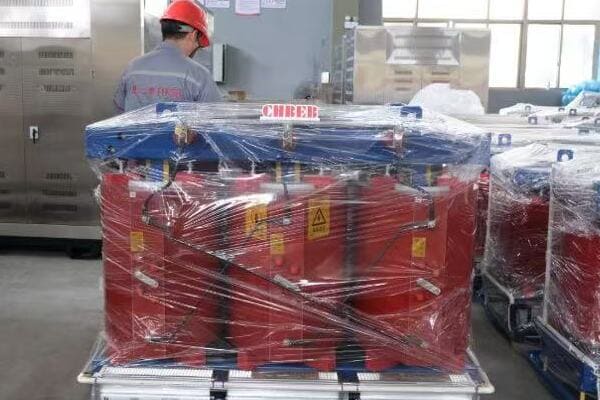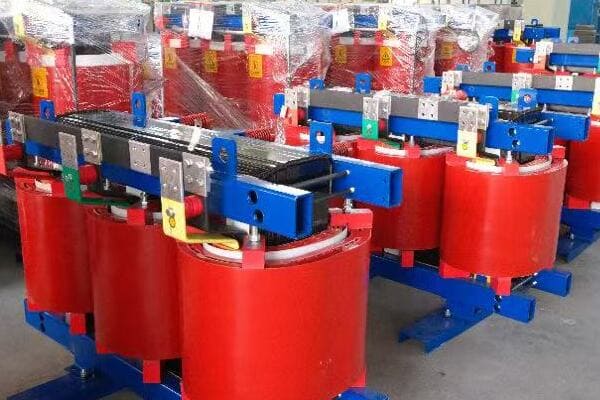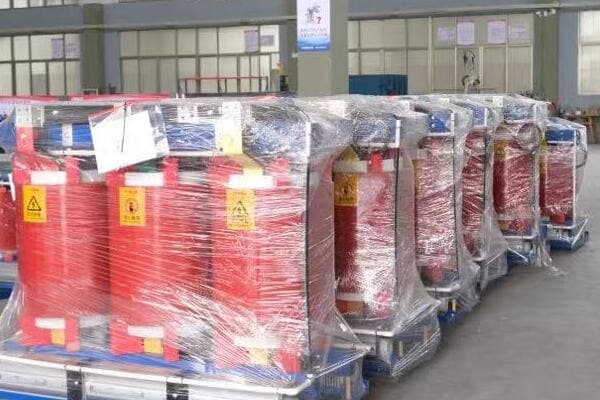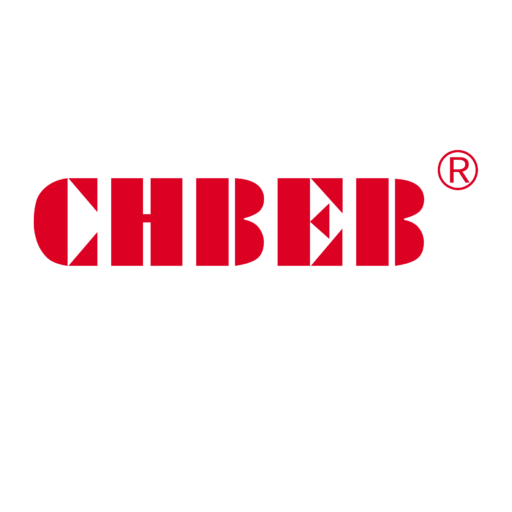Pad Mounted Transformer Price Guide: What Affects Cost and How to Budget in 2025?
Are you struggling to budget for pad mounted transformers in 2025? You’re not alone. With fluctuating prices and changing technologies, it’s harder than ever to predict costs accurately.
Pad mounted transformer prices in 2025 are influenced by global supply chains, capacity, efficiency standards, installation costs, and long-term energy savings. Understanding these factors is crucial for accurate budgeting and maximizing ROI.
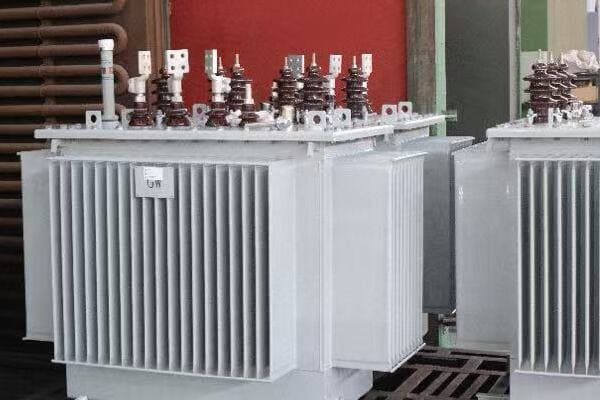
I’ve been in the power industry for years, and I’ve seen how complex transformer pricing can be. But don’t worry – I’m here to guide you through the maze of factors that affect pad mounted transformer costs in 2025. Let’s dive in and uncover the secrets to smart budgeting.
Market Dynamics: How Global Supply Chain Trends Are Shaping Pad Mounted Transformer Prices in 2025?
Are you feeling the pinch of rising transformer prices? You’re not imagining it. Global supply chain trends are having a major impact on pad mounted transformer costs in 2025. But what’s really driving these changes?
In 2025, pad mounted transformer prices are heavily influenced by raw material costs, shipping expenses, and manufacturing location. Global events and trade policies are causing price fluctuations of up to 20% compared to previous years.
I’ve been tracking these trends closely, and the impact is significant. Let me break down what I’m seeing in the market:
Raw Material Costs: The Foundation of Pricing
Copper and Steel: The Big Players
Copper and steel prices have always been volatile, but in 2025, we’re seeing unprecedented swings:
- Copper: Prices have increased by 30% since 2023
- Steel: We’re looking at a 15% increase over the same period
These materials make up a significant portion of a transformer’s cost, so their impact is huge.
Insulating Materials: The Hidden Factor
Don’t overlook the impact of insulating materials:
- Mineral Oil: Prices up 10% due to petroleum market fluctuations
- Cellulose: Increased demand in other industries has driven prices up 5%
Shipping and Logistics: The New Challenge
Global shipping rates have been a rollercoaster ride:
| Year | Average Container Shipping Cost |
|---|---|
| 2023 | $3,000 |
| 2024 | $4,500 |
| 2025 | $5,200 |
This increase is directly affecting transformer prices, especially for imported units.
Manufacturing Location: A Key Price Determinant
Where your transformer is made matters more than ever:
- China: Still competitive, but tariffs and shipping costs are eating into the price advantage
- India: Emerging as a strong alternative, with prices about 10% lower than Western manufacturers
- North America: Higher labor costs, but shorter supply chains are making them more competitive
The Impact of Global Events
I can’t stress enough how global events are shaping prices:
- Trade Tensions: Ongoing disputes are causing sudden tariff changes
- Natural Disasters: Disruptions in key manufacturing regions are causing supply shortages
- Pandemic Aftereffects: We’re still seeing ripples from COVID-19 in supply chain resilience
Strategies for Navigating Market Dynamics
Based on my experience, here are some strategies to consider:
- Diversify Suppliers: Don’t rely on a single region or manufacturer
- Long-term Contracts: Lock in prices when possible to avoid short-term fluctuations
- Local Sourcing: Consider the total cost, including shipping and potential delays
- Stay Informed: Keep an eye on global events that might impact the supply chain
Future Outlook
Looking ahead, I see a few trends that will shape prices:
- Increased Automation: This could help stabilize manufacturing costs
- Sustainable Materials: Growing demand might increase costs initially but could lead to long-term savings
- Reshoring: More local manufacturing could reduce shipping costs but increase labor expenses
Remember, in the world of pad mounted transformers, global factors have very local impacts. Staying informed and flexible is key to managing costs effectively in 2025 and beyond.
Capacity and Features: Understanding the Correlation Between Transformer Specifications and Cost?
Are you wondering why that high-capacity transformer costs so much more? Or why adding certain features seems to skyrocket the price? You’re not alone. The relationship between transformer specifications and cost can be complex, but it’s crucial to understand for effective budgeting.
In 2025, pad mounted transformer prices are closely tied to their capacity and features. Higher kVA ratings, advanced monitoring systems, and eco-friendly designs can increase costs by 30-50% compared to basic models.

I’ve been designing and pricing transformers for years, and I’ve seen firsthand how specifications impact costs. Let’s break it down:
Capacity: The Primary Cost Driver
kVA Ratings and Price
The kVA (kilovolt-ampere) rating is the most significant factor in transformer pricing. Here’s a rough guide based on current trends:
| kVA Rating | Relative Price |
|---|---|
| 100 kVA | Baseline |
| 500 kVA | 2.5x Baseline |
| 1000 kVA | 4x Baseline |
| 2000 kVA | 7x Baseline |
Remember, these are approximate. Actual prices can vary based on other factors.
Why Higher Capacity Costs More
It’s not just about size. Higher capacity transformers require:
- More raw materials (copper, steel)
- Advanced cooling systems
- Stronger structural components
- More complex manufacturing processes
Features: The Price Multipliers
Monitoring and Control Systems
Smart features are becoming standard, but they do impact cost:
- Basic Monitoring: Adds 5-10% to base price
- Advanced SCADA Integration: Can increase price by 15-20%
- AI-Powered Predictive Maintenance: Expect a 25-30% premium
Efficiency Ratings
Higher efficiency comes at a cost:
- Standard Efficiency: Baseline
- High Efficiency (DOE 2016 Standard): 10-15% price increase
- Ultra-High Efficiency: 20-25% price increase
But remember, higher efficiency often pays for itself in energy savings over time.
Environmental Features
Eco-friendly options are increasingly popular but can be pricey:
- Biodegradable Insulating Oil: Adds 5-10% to cost
- Dry-Type Design: Can increase price by 20-30%
- Noise Reduction Features: 5-15% price increase depending on level
Real-World Example
Let me share a recent project I worked on:
- Base Model: 1000 kVA, standard efficiency – $30,000
- Upgrades:
- High efficiency design: +$4,500
- Advanced monitoring: +$6,000
- Eco-friendly insulation: +$3,000
- Final Price: $43,500
That’s a 45% increase from the base model, but the client saw it as a worthwhile investment for long-term savings and reliability.
Making the Right Choice
When specifying a transformer, consider:
- Current and future capacity needs
- Local efficiency regulations
- Long-term operational costs vs. upfront price
- Specific site requirements (noise restrictions, environmental concerns)
Future Trends
Looking ahead, I see a few developments that will impact pricing:
- Increased integration of renewable energy features
- More emphasis on cybersecurity in smart transformers
- Advanced materials reducing weight and size (and potentially cost)
Remember, the cheapest option isn’t always the most cost-effective in the long run. It’s about finding the right balance of capacity, features, and price for your specific needs.
Efficiency Standards: The Impact of New Regulations on Pad Mounted Transformer Pricing?
Are you caught off guard by the rising prices of pad mounted transformers? You’re not alone. New efficiency standards are shaking up the market, and many buyers are struggling to understand the impact on costs. But what’s really behind these price changes?
In 2025, new efficiency regulations are driving up pad mounted transformer prices by 15-25%. These standards require higher-grade materials and more advanced designs, but they promise significant energy savings and lower long-term operational costs.
I’ve been following these regulatory changes closely, and their impact on pricing is significant. Let’s dive into the details:
Understanding the New Standards
DOE 2016 vs. 2025 Standards
The Department of Energy (DOE) has been tightening efficiency standards:
| Efficiency Level | 2016 Standard | 2025 Standard |
|---|---|---|
| 15 kVA Single-Phase | 98.65% | 99.00% |
| 150 kVA Three-Phase | 99.16% | 99.40% |
| 1500 kVA Three-Phase | 99.48% | 99.60% |
These might seem like small changes, but they have a big impact on design and cost.
Why Higher Efficiency Costs More
Advanced Core Materials
To meet these standards, manufacturers are using more expensive materials:
- Amorphous Metal Cores: 30-40% more expensive than traditional silicon steel
- Grain-Oriented Electrical Steel: 15-20% price premium
Improved Winding Techniques
New winding methods reduce losses but increase manufacturing complexity:
- Foil Windings: Can add 10-15% to production costs
- Epoxy Encapsulation: Increases material costs by 5-10%
Enhanced Cooling Systems
Better efficiency often means better cooling:
- Advanced Oil Types: Can be 20-30% more expensive
- Forced Oil Cooling: Adds 15-20% to overall transformer cost
The Cost-Benefit Analysis
While prices are higher, the long-term savings can be substantial:
- Energy Savings: A 0.5% efficiency increase can save thousands in energy costs annually
- Longer Lifespan: Higher quality materials often mean extended transformer life
- Reduced Maintenance: Better designs can lead to fewer issues over time
Real-World Impact
I recently worked with a utility company upgrading their transformers. Here’s what we found:
- Old 1000 kVA Transformer: $28,000, 98.9% efficient
- New 1000 kVA Transformer: $35,000, 99.4% efficient
- Annual Energy Savings: $3,500
- Payback Period: About 2 years
After that, it’s all savings and reduced environmental impact.
Strategies for Managing Costs
- Long-Term Planning: Factor in operational savings, not just upfront costs
- Bulk Purchasing: Some manufacturers offer discounts for large orders
- Retrofit Options: In some cases, upgrading existing transformers can be cost-effective
- Explore Incentives: Many utilities and governments offer rebates for high-efficiency equipment
Future Outlook
Looking ahead, I see a few trends:
- Continued Push for Higher Efficiency: Expect standards to tighten further
- Integration of Smart Grid Features: This may add costs but increase overall grid efficiency
- Focus on Total Ownership Cost: The industry is shifting towards valuing long-term savings over initial price
Making the Right Choice
When navigating these new standards:
- Calculate Total Cost of Ownership (TCO) over the transformer’s lifespan
- Consider your specific load profile and usage patterns
- Stay informed about local regulations and incentives
- Don’t compromise on efficiency to save on upfront costs – it rarely pays off
Remember, while the initial price tag might be higher, the new efficiency standards are designed to save money and energy in the long run. It’s about seeing the bigger picture and making an informed investment in your power infrastructure.
Installation and Maintenance: Hidden Costs to Consider When Budgeting for Pad Mounted Transformers?
Are you focusing solely on the purchase price of pad mounted transformers? If so, you might be in for a shock when the total bill comes due. Installation and maintenance costs can significantly impact your budget. But how much should you really be setting aside?
In 2025, installation and maintenance can add 30-50% to the total cost of ownership for pad mounted transformers. These hidden expenses include site preparation, specialized equipment, regular maintenance, and potential repairs.
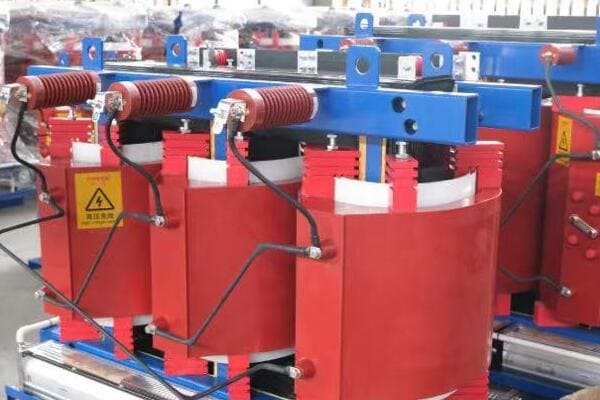
I’ve overseen countless transformer installations and maintenance programs. Trust me, these costs can sneak up on you if you’re not prepared. Let’s break down what you need to know:
Installation Costs: More Than Just Placement
Site Preparation
This is often overlooked but can be substantial:
- Concrete Pad: $2,000 – $5,000
- Grounding System: $1,500 – $3,000
- Trenching and Conduit: $50 – $100 per linear foot
Transportation and Handling
Getting the transformer to your site isn’t cheap:
- Local Transport: $500 – $1,500
- Long-Distance Shipping: Can exceed $5,000 for large units
- Crane Rental: $500 – $2,000 per day
Labor Costs
Skilled technicians don’t come cheap:
- Electricians: $75 – $150 per hour
- Project Manager: $100 – $200 per hour
- Typical Installation Time: 1-3 days depending on complexity
Maintenance: The Ongoing Expense
Routine Maintenance
Regular check-ups are crucial:
| Maintenance Task | Frequency | Typical Cost |
|---|---|---|
| Visual Inspection | Annually | $200 – $500 |
| Oil Testing | Every 3-5 years | $300 – $800 |
| Infrared Scanning | Annually | $300 – $700 |
Repairs and Replacements
Sometimes things go wrong:
- Bushing Replacement: $1,500 – $3,000
- Oil Leak Repair: $500 – $2,000
- Major Overhaul: Can exceed $10,000
Real-World Example
Let me share a recent project I managed:
- Transformer Purchase: $40,000 (1000 kVA)
- Installation Costs:
- Site Prep: $4,500
- Transport and Crane: $2,000
- Labor: $3,500
- First Year Maintenance: $800
- Total First-Year Cost: $50,800
That’s over 25% more than the purchase price alone!
Strategies for Managing Costs
- Comprehensive Site Assessment: Do this before purchase to avoid surprises
- Preventive Maintenance: Regular care can prevent costly emergency repairs
- Training In-House Staff: This can reduce reliance on expensive external technicians
- Consider Maintenance Contracts: Long-term agreements can often provide cost savings
Future Trends
Looking ahead, I see a few developments that could impact installation and maintenance costs:
- Remote Monitoring: Reducing the need for frequent on-site inspections
- Predictive Maintenance AI: Helping to prevent failures before they occur
- Modular Designs: Potentially making installations and replacements easier
Making the Right Choice
When budgeting for a pad mounted transformer:
- Factor in at least 30% of the purchase price for installation
- Budget 2-5% of the purchase price annually for maintenance
- Consider the location and accessibility of the installation site
- Don’t skimp on quality to save on upfront costs – it often leads to higher maintenance expenses
Remember, the true cost of a pad mounted transformer goes well beyond the price tag. By planning for these hidden costs, you can avoid budget overruns and ensure your transformer operates efficiently for years to come.
ROI Analysis: Balancing Initial Investment with Long-Term Energy Savings in Transformer Selection?
Are you struggling to justify the high upfront cost of a new, efficient pad mounted transformer? You’re not alone. Many buyers focus on the initial price tag without considering the long-term savings. But how do you really calculate the return on investment (ROI) for these critical pieces of infrastructure?
In 2025, high-efficiency pad mounted transformers can offer ROI periods of 3-7 years, with energy savings of 15-30% over their lifespan compared to standard models. The key is balancing higher initial costs against long-term operational savings.
I’ve helped numerous clients navigate this cost-benefit analysis, and I can tell you, the numbers often surprise them. Let’s dive into the details of how to calculate and maximize your ROI:
Understanding the Components of ROI
Initial Costs
This is more than just the purchase price:
- Transformer Cost: Varies widely based on capacity and features
- Installation: As we discussed earlier, this can add 30-50% to the initial cost
- Upgrades to Existing Infrastructure: Sometimes necessary for new, high-efficiency models
Operational Savings
This is where the magic happens:
- Energy Savings: The primary source of long-term ROI
- Reduced Maintenance: Higher quality often means fewer issues
- Longer Lifespan: Delaying the need for replacement
Other Factors
Don’t overlook these potential benefits:
- Utility Rebates: Many offer incentives for high-efficiency transformers
- Tax Benefits: Some regions offer tax breaks for energy-efficient upgrades
- Increased Property Value: For commercial properties, this can be significant
Calculating ROI: A Step-by-Step Guide
Let’s walk through a real-world example I recently worked on:
-
Initial Investment:
- Standard 1000 kVA Transformer: $30,000
- High-Efficiency 1000 kVA Transformer: $38,000
- Additional Cost: $8,000
-
Annual Energy Savings:
- Standard Model Losses: 8,760 kWh/year
- High-Efficiency Model Losses: 6,570 kWh/year
- Energy Saved: 2,190 kWh/year
- At $0.12/kWh: $262.80 annual savings
-
Maintenance Savings:
- Estimated at $200/year due to better components
-
Total Annual Savings: $462.80
-
Simple ROI Calculation:
- Payback Period = Additional Cost / Annual Savings
- $8,000 / $462.80 = 17.3 years
But wait, there’s more to consider!
Factors That Improve ROI
Load Factor
The transformer in our example was only partially loaded. At higher load factors, savings increase dramatically:
| Load Factor | Annual Savings | Payback Period |
|---|---|---|
| 35% (initial) | $462.80 | 17.3 years |
| 50% | $661.14 | 12.1 years |
| 75% | $991.71 | 8.1 years |
Rising Energy Costs
Energy prices rarely stay static. Assuming a 3% annual increase:
- Year 1 Savings: $462.80
- Year 10 Savings: $602.70
- Year 20 Savings: $809.80
This accelerates the ROI significantly.
Utility Incentives
Many utilities offer rebates for efficient transformers. A typical 10% rebate on the price difference would reduce our payback period by nearly 2 years.
Real-World ROI Analysis
Let’s put it all together with a more realistic scenario:
- Initial Extra Cost: $8,000
- Average Load Factor: 60%
- Annual Energy Savings: $793.37 (year 1)
- Maintenance Savings: $200/year
- Energy Cost Increase: 3% annually
- Utility Rebate: $800 (10% of price difference)
Result:
- Payback Period: 6.7 years
- 20-Year Net Savings: $27,450
That’s a significant return on a relatively small initial investment!
Strategies for Maximizing ROI
- Right-Sizing: Ensure your transformer isn’t oversized for your needs
- Consider Future Growth: A slightly larger, efficient transformer might be more cost-effective long-term
- Explore All Incentives: Utility rebates, tax incentives, and green energy credits can significantly impact ROI
- Monitor and Optimize: Regular monitoring can help ensure your transformer operates at peak efficiency
Future Trends Affecting ROI
Looking ahead, I see several factors that could impact ROI calculations:
- Increasing Energy Costs: This will likely improve ROI for efficient models
- Stricter Efficiency Regulations: May increase initial costs but also potential savings
- Advanced Materials: Could lead to even more efficient designs
- Integration with Smart Grids: May offer new revenue streams or savings opportunities
Making the Right Choice
When evaluating transformer options:
- Look beyond the initial price tag
- Consider your specific usage patterns and load factors
- Factor in all potential savings, not just energy costs
- Use a comprehensive ROI calculator that accounts for all variables
Remember, while the upfront cost of a high-efficiency pad mounted transformer may be higher, the long-term savings often make it a smart investment. It’s about seeing the bigger picture and making a decision that benefits your bottom line for years to come.
Conclusion
Budgeting for pad mounted transformers in 2025 requires considering multiple factors: market dynamics, specifications, efficiency standards, installation and maintenance costs, and long-term ROI. By understanding these elements, you can make informed decisions that balance upfront costs with long-term savings.
Free CHBEB Transformer Catalog Download
Get the full range of CHBEB transformers in one catalog.
Includes oil-immersed, dry-type, pad-mounted, and custom solutions.
Quick Message
Request A free quote
We'd like to work with you
- +86 15558785111
- [email protected]
- +86 15558785111
What We Do
CHINA BEI ER BIAN (CHBEB) GROUP, with 218 million in registered capital, originated from Beijing Beierbian Transformer Group. Headquartered in Beijing for R&D, it operates major production bases in Nanjing and Yueqing, producing high-quality products.
Latest Product
address
BeiJing
No 3,RongJing East Road,BeiJing Economic Technological Development Area,BeiJing,China
JiangSu
No 7️Xiangfeng Road,Jiangning,NanJing,JiangSu,China
WenZhou
No.211, Wei 16 Road, Industrial Zone, Yueqing, Wenzhou, Zhejiang, China.
XiangYang Industrial Zone ,YueQing,WenZhou,ZheJiang,China
contact us
- [email protected]
- +86 13057780111
- +86 13057780111
- +86 15558785111
Copyright © Bei Er Bian Group

